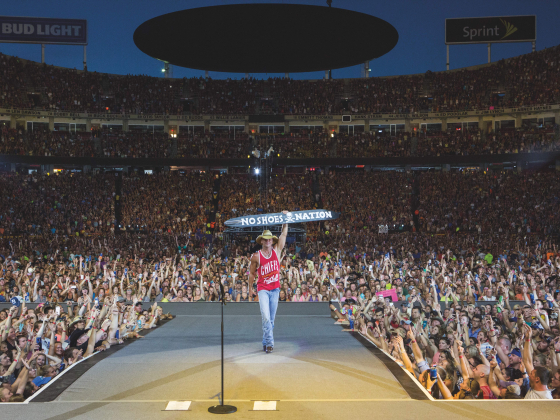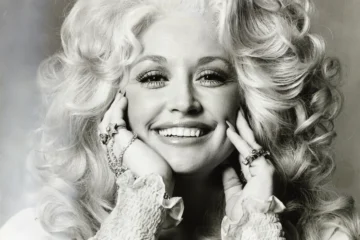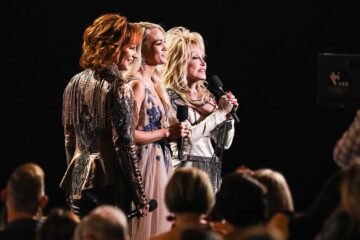 The evolution of country music has come a long way from its humble beginnings in the honky-tonk bars and small market radio stations to becoming one of the most commercially known genres of music worldwide, where some artists now sell out stadiums. Originating as a regional sound, deeply rooted in folk and bluegrass traditions and rural storytelling, has transformed into an industry that is capable of filling football stadiums and headlining worldwide music festivals. So, what events took place for the evolution of country music to evolve from intimate settings to dominance in the mainstream? Let’s look at some factors below.
The evolution of country music has come a long way from its humble beginnings in the honky-tonk bars and small market radio stations to becoming one of the most commercially known genres of music worldwide, where some artists now sell out stadiums. Originating as a regional sound, deeply rooted in folk and bluegrass traditions and rural storytelling, has transformed into an industry that is capable of filling football stadiums and headlining worldwide music festivals. So, what events took place for the evolution of country music to evolve from intimate settings to dominance in the mainstream? Let’s look at some factors below.
The Roots of Country Music – Honky-Tonks and Radio Waves
The early days of country music were defined by its emotional, raw storytelling and stripped-down instrumentation. With its emergence in the early 20th century, country music blended Appalachian folk, gospel, and blues to create a distinctive sound. Honky-tonks – rowdy bars that catered to working-class audiences – became the ground for the pioneers of country music. Artists such as Ernest Tubb, Lefty Frizzell, Roger Miller, and Hank Williams, Sr., found their audiences in a more inclusive environment, where their production of steel guitars, fiddles, and twangy vocals reigned supreme. During the early half of the 20th century, radio stations helped spread country music beyond its local dive bars and dance halls. The Grand Ole Opry became a pivotal force that brought country music to a larger audience. Stars such as Bill Monroe and Roy Acuff became household names, which introduced millions to the heartfelt sound of country music.
The Pop Sensibilities Into the Nashville Sound
By the 1950s and 1960s, country music shifted from the grit of honky-tonks to a more polished, commercial sound. Nashville, Tennessee, emerged as the epicenter of the genre, with producers like Chet Atkins smoothing out country music’s rough edges. Dubbed the “Nashville Sound,” this evolution incorporated rich orchestration, background vocals, and pop-influenced melodies, making artists like Patsy Cline and Eddy Arnold more appealing to mainstream audiences. This era also saw the rise of television as a medium for country music exposure. Shows like Hee Haw introduced country stars to wider audiences, cementing the genre’s popularity beyond its Southern and Midwestern roots.
The Outlaw Country Era of the 1970s
While Nashville was polishing its country music sound, another movement was brewing. The 1970s ushered in the Outlaw Country era, led by rebellious artists like Willie Nelson, Waylon Jennings, and Merle Haggard. These musicians rejected the commercialized Nashville Sound, opting for a grittier, more authentic style that echoed the genre’s honky-tonk origins. Their independent spirit resonated with fans who longed for a return to country’s raw storytelling. Simultaneously, country music was growing in mainstream appeal. Dolly Parton, Kenny Rogers, and Glen Campbell became crossover pop stars, achieving massive success on both country and pop charts. Their ability to blend country storytelling with radio-friendly hooks helped push the genre into arenas and concert halls, setting the stage for the stadium-filling acts to come.
The Boom of the Genre in the 1990s
The 1990s were a golden era for country music, marked by an explosion of mega-stars who could sell out arenas and stadiums nationwide. If you want to know more information about the 90s, click here. Garth Brooks led the charge, becoming one of the best-selling artists of all time and revolutionizing country concerts with high-energy performances. His shows proved that country music had fully entered the arena spectacle era.
Alongside Brooks, artists like Shania Twain, George Strait, Alan Jackson, and Brooks & Dunn dominated the charts. Twain, in particular, helped bridge the gap between country and pop, bringing in a broader audience with her genre-blending hits like “That Don’t Impress Me Much.” Country music was no longer just for rural America, as it was starting to become a global phenomenon.
The Modern-Day Era: Cross-Genre Collaborations, Rise of Social Media, and Festivals
In today’s climate, country music has firmly established itself as a genre that has transcended its traditional roots. Stadium tours have become quite a norm for modern country superstars like Luke Combs, Morgan Wallen, and Kenny Chesney. With the influence of pop and hip-hop, contemporary country music often features differing genre production, 808s, and cross-collaborations with artists outside of the genre. The rise of major country music festivals, such as Stagecoach and CMA Fest, has significantly helped the expansion of the genre. These festivals attract tens of thousands of fans that showcase country’s mass appeal. Meanwhile, social media has allowed independent artists to gain traction without the backing of major labels, has been helpful for the building of the genre.
Concluding Thoughts
The journey that has took country music from honky-tonk bars to sold-out stadium tours is a continual testament to country music’s adaptability and resilience within the country music industry. While the sound and market of country music has evolved and expanded, the authenticity remains unchanged. Whether country music is played in a local dive bar or a stadium tour, country music continues to connect with fans in a way that few other genres are able to. As new artists continue to push the boundaries, the evolution of country music is far from over.

